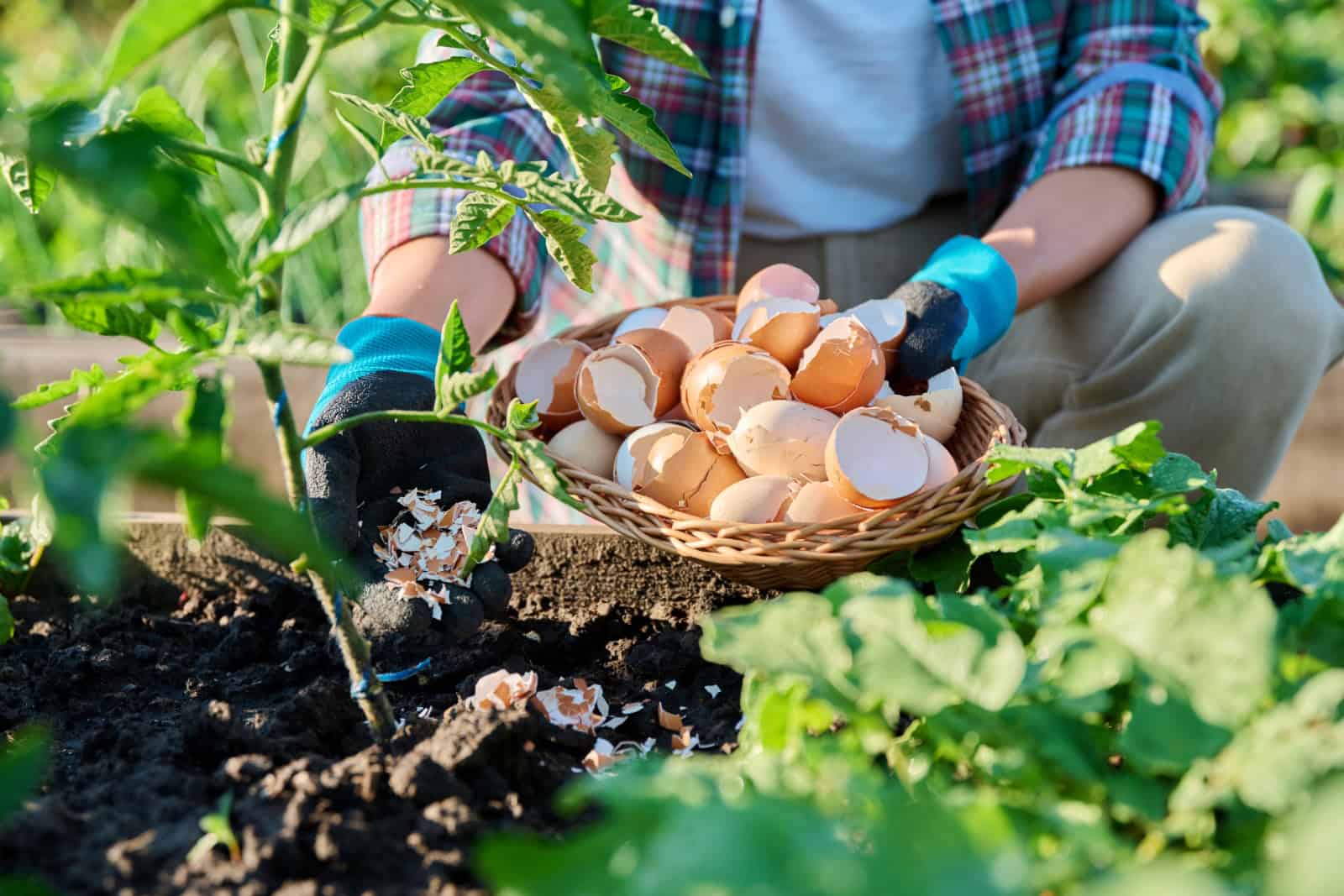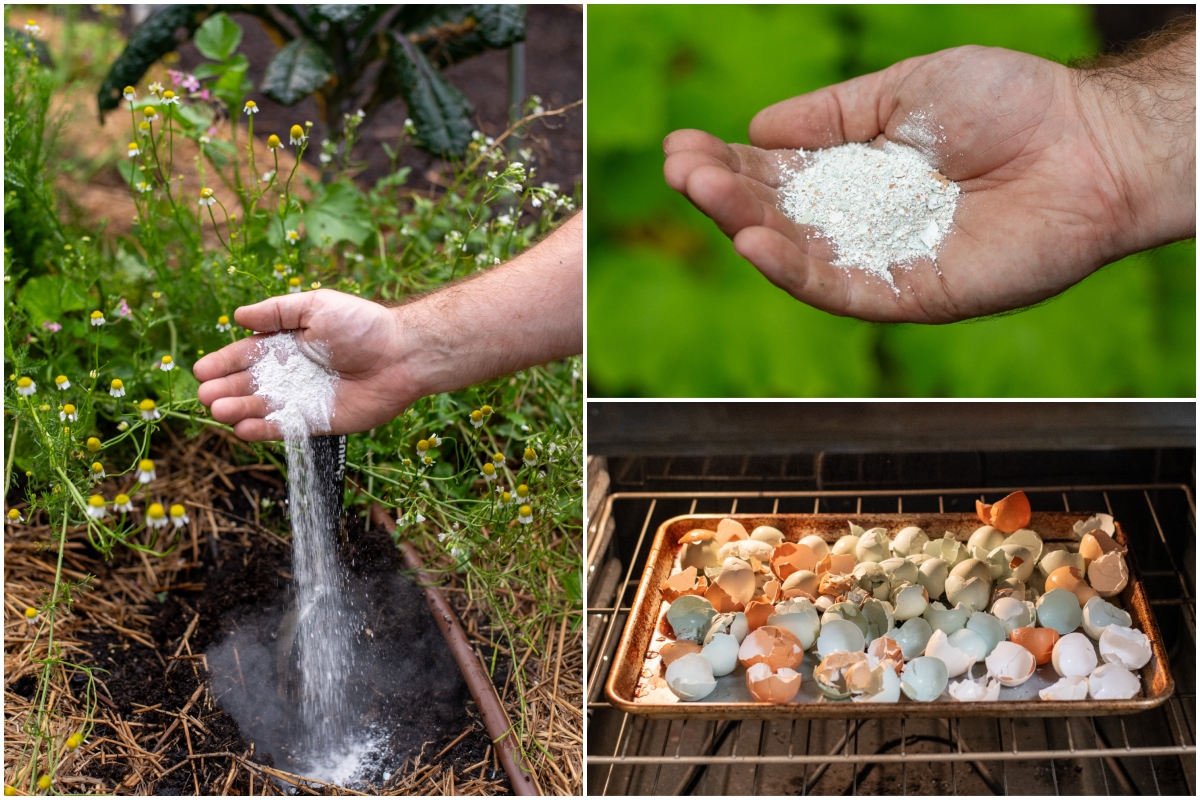Discover how hanging eggshells in your garden can deter pests, improve soil health, and contribute to sustainable gardening in Canada. Learn best practices, scientific reasoning, and implementation tips for both beginner and experienced gardeners.
A Low-Cost Strategy with High Impact
At DH Garden Centre, we often emphasize that successful gardening in Canada is not just about what you plant—it’s also about how you manage your resources and environment. One overlooked yet effective technique we often recommend to customers is repurposing eggshells, not by composting them directly, but by hanging them in mesh bags throughout the garden.
This simple practice serves multiple functions—from deterring common pests to gradually enriching soil with calcium. Whether you are growing vegetables in raised beds or cultivating ornamental borders, understanding how to use eggshells effectively can elevate both plant health and ecological balance in your garden.

Hanging eggshells in your garden can deter pests, improve soil health, and contribute to sustainable gardening in Canada.
Understanding the Role of Eggshells in the Garden
Eggshells are composed primarily of calcium carbonate, a critical nutrient for plant development, especially in fruiting vegetables like tomatoes and peppers. However, their value goes beyond soil enrichment.
When dried and strategically suspended in mesh bags or netting, eggshells become an effective tool for:
-
Natural pest deterrence
-
Soil amendment over time
-
Promoting circular, low-waste gardening practices
Let’s examine each of these applications in more detail, particularly within the Canadian climate context.

Eggshells are composed primarily of calcium carbonate, a critical nutrient for plant development, especially in fruiting vegetables like tomatoes and peppers.
Pest Deterrence: A Natural Barrier for Common Garden Threats
In many areas across British Columbia, Alberta, and Ontario, gardeners struggle with deer, rabbits, squirrels, and slugs. Hanging eggshells acts as a multipurpose deterrent—both olfactory and physical.
1. Deterring Deer and Rabbits
The scent of raw or sun-dried eggshells can deter larger herbivores. As the shells decompose slightly, they emit sulfurous compounds reminiscent of decay or predator presence, which naturally discourages animals like deer and rabbits from approaching the area.
While not 100 percent foolproof, this method provides a low-cost, chemical-free layer of defense. Positioning eggshell bags around vulnerable crops—such as leafy greens or berry bushes—can reduce browsing damage significantly, especially during early spring and late summer when food competition among wildlife intensifies.
2. Reducing Slug and Snail Activity
When crushed finely and stored loosely in hanging mesh, eggshell particles fall gradually to the soil surface, creating a mildly abrasive layer. Soft-bodied pests such as slugs and snails find it difficult to traverse these surfaces, helping to protect crops like lettuce, kale, and hostas.
This technique is especially effective in coastal regions like Vancouver Island or Lower Mainland areas, where spring moisture accelerates slug outbreaks.

When crushed finely and stored loosely in hanging mesh, eggshell particles fall gradually to the soil surface, creating a mildly abrasive layer.
Soil Enrichment and Calcium Delivery
Calcium plays an essential role in plant cell wall formation and is directly linked to preventing common issues such as blossom end rot in tomatoes, zucchinis, and peppers. Hanging eggshells facilitates a slow-release mechanism for calcium as rain, wind, and microbial action break down the shells over time.
Unlike grinding and directly incorporating shells into the soil, hanging them ensures that the breakdown process is more gradual, resulting in consistent nutrient delivery throughout the growing season.
At DH Garden Centre, we have observed that clients using this method often report stronger stems, healthier fruit sets, and fewer physiological disorders linked to nutrient deficiency.
How to Hang Eggshells in Your Garden: Step-by-Step Method
To implement this method effectively, preparation and placement matter. Below is a recommended approach based on our experience and customer feedback.
Materials Required
-
Clean, dry eggshells (preferably sun-dried)
-
Mesh produce bag, cheesecloth, or breathable fabric sack
-
Twine, jute, or natural cord
-
Wooden stake, trellis, or fence post
Preparation
-
Rinse and dry the eggshells thoroughly to remove organic residue and prevent attracting raccoons or rodents.
-
Lightly crush some of the shells while keeping others whole to create a blend that provides both scent and texture benefits.
-
Fill the mesh bag approximately two-thirds full to allow air circulation.
Placement
-
Hang at plant canopy height or approximately 60–90 cm above ground.
-
For perimeter protection, hang a bag every 2 to 3 meters around the boundary.
-
Near targeted crops, such as tomatoes or strawberries, hang directly above or adjacent to the planting area.
-
Avoid hanging too close to sprinkler systems to prevent over-soaking and premature decomposition.
Maintenance
-
Replace eggshells every 3 to 4 weeks during peak growing season.
-
In wet climates, monitor for mold or fermentation odor and adjust frequency accordingly.
-
Shells can be composted after use or returned to raised beds.

How to Hang Eggshells in Your Garden: Step-by-Step Method
Timing and Regional Considerations in Canada
In most of Canada, the best time to initiate this method is from late March to early April, as temperatures rise and pest pressure increases. This coincides with the transplanting of early vegetables and the active foraging season of herbivorous wildlife.
In British Columbia’s west coast, where winters are mild and spring arrives early, the practice can begin as early as March. In colder provinces like Alberta or Manitoba, wait until soil temperatures consistently stay above 7–10°C before deploying eggshell barriers.
Addressing Common Concerns
Will the smell attract other animals?
If the eggshells are well-rinsed and sun-dried, the risk of attracting scavengers is minimal. Avoid using shells with residual yolk or whites.
Can this replace commercial slug bait?
Not entirely. While effective as a passive repellent, eggshells may not eliminate established slug populations. However, in combination with mulch, copper barriers, or biological controls, they contribute significantly to integrated pest management.
Do I need to sterilize the eggshells?
Sterilization is optional. Most gardeners prefer sun-drying for 24–48 hours. However, if you are concerned about contamination (especially near edible greens), you may bake the shells at 200°F (93°C) for 10 minutes.
Environmental and Educational Value
This technique is especially appealing for gardeners seeking to reduce household waste. Rather than discarding eggshells into landfill or waiting for compost cycles, this method gives them immediate utility.
Additionally, it serves as an excellent teaching tool in school gardens and family plots—illustrating the principles of recycling, plant nutrition, and non-toxic pest control.
Final Perspective from DH Garden Centre
As a family-run garden centre committed to organic principles and climate-appropriate solutions, we at DH Garden Centre consistently encourage simple, replicable methods that support both plant health and environmental stewardship.
Hanging eggshells is not a magical solution, but it is practical, affordable, and surprisingly effective when used correctly. We recommend it especially for organic gardeners, urban gardeners, and anyone looking to get more from their everyday kitchen waste.
Over the past decade, we’ve seen this method reduce pest problems, strengthen fruit production, and make gardening more approachable—especially for those just starting out.

Hanging eggshells is not a magical solution, but it is practical, affordable, and surprisingly effective when used correctly.
Visit DH Garden Centre or Shop Online
If you are interested in implementing this technique, visit our Vancouver location or explore our online store for:
-
Organic composts and soil blends
-
Mesh bags and sustainable garden accessories
-
Calcium-rich soil amendments
-
Companion planting guides and pest control solutions
DH Garden Centre
3742 West 10th Avenue, Vancouver, BC V6R 2G4
Phone: 604-929-7335
Website: www.dhgardencentre.com
Instagram: @dh.garden.centre
Facebook: dh.garden.centre160
We look forward to helping you build a greener, more resilient garden—starting with your kitchen scraps.

